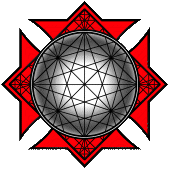(Spada, Schwert)
14th – mid 16th century.
“Longsword” is a modern term applied to a variety of swords, the common element of which is a grip that allows the weapon to be wielded with both hands. In the period of their use one of these weapons would simply be referred to as a “sword” (spada, schwert). Longswords are usually differentiated from the larger and heavier “Zweihander,” “Montante” and “Spadone” used in banner guards and defenses of streets and causeways. The longsword was used in warfare and in duels, and was retained for centuries in the fencing schools as an important teaching tool. The longsword may vary significantly in design, but the most common have a blade with a strong, wide forte, which tapers to an acute point for thrusting. Because of this design and the methods outlined for their use by the fencing masters in the period, it is clear that they are cut and thrust weapons which are long enough and possessed of enough leverage to provide offense and defense simultaneously. Techniques for the weapon include a large number of actions with the back edge and the point. These blade actions are complimented with joint locks and throws using all parts of the weapon. The sword may be used with both hands on the grip, one hand on the grip and one hand on the blade, or both hands on the blade. In these modes the weapon can be employed as a sword in one hand, a sword in two hands, a spear, a dagger or an axe. “Foiled,” practice versions of this weapon were manufactured, and are curiously shaped weapons with a broad, flat forte and a long slender blade with squared edges and a rounded point.
